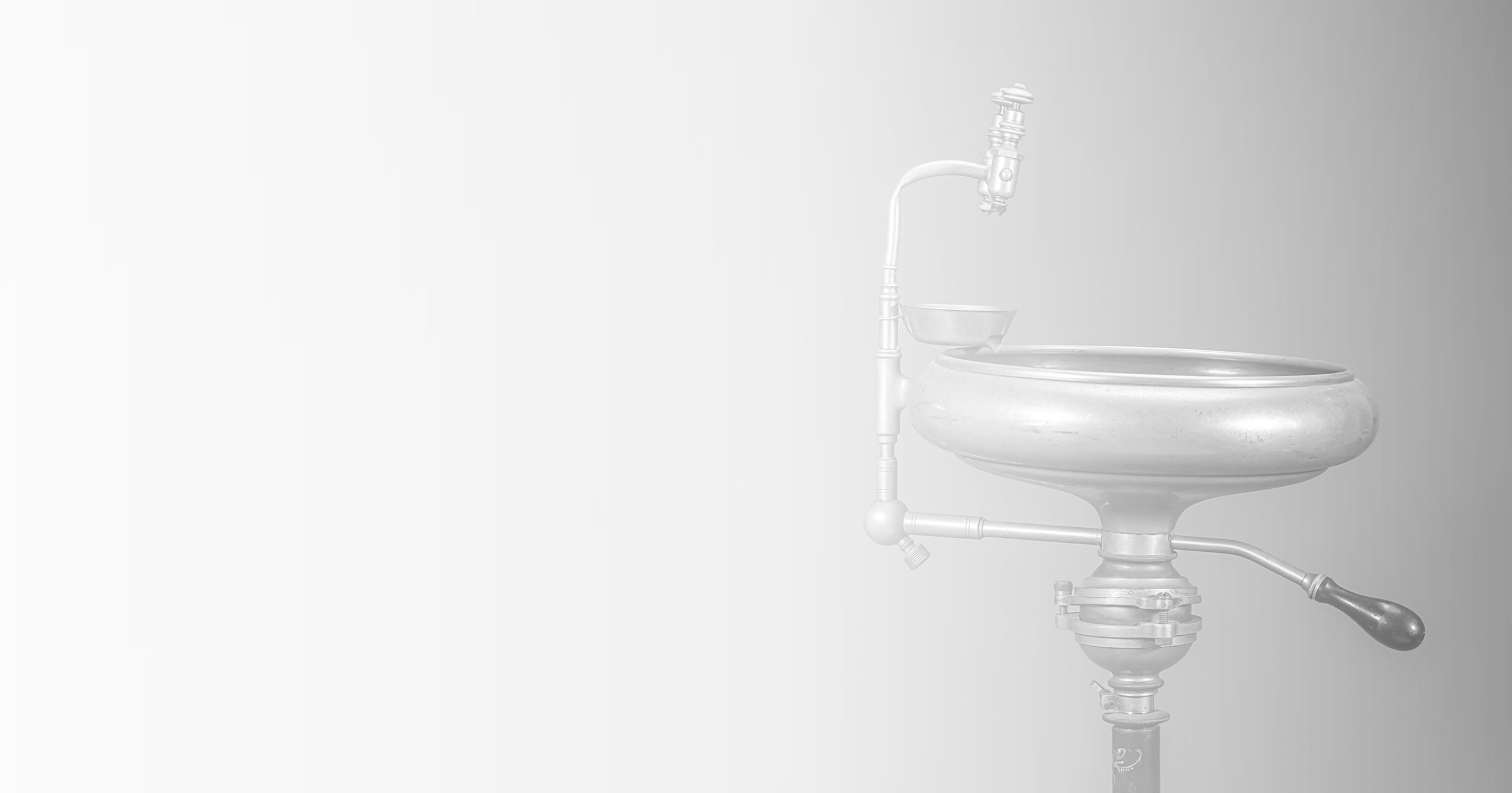
HOME > ALL DISPLAYS > 1860-1890 > ADJUSTABLE SPITTOON

Adjustable Spittoon
1881 | Object #: 0337.0005
According to a dental catalog of the day, “It is readily adjustable to the position of the chair; that is, it can by an easy movement of the hand be raised or lowered to suit the height at which the chair is placed at the moment. The normal position of its base is, say, eighteen inches to the left side of the chair, from which position its basin will ordinarily be inclined towards the chair and patient; but should the operator desire to stand on that side of his patient, the standard of the spittoon can be instantly inclined in the opposite direction.”
At a time when running water was not widely available, this spittoon featured a continuous supply of freshwater that rinsed waste down through the center column. Both the water supply and drain connected with plumbing lines under the floor.
Let’s explore some of the physical features of this artifact.

1/5: Made of cast iron, this mill is heavy and would have been secured to a workbench to get maximum leverage to flatten the metal.

2/5: Several passes are made with incremental spreading of the metal with each pass.

3/5: Marshall Dental Manufacturing Company, was one of many regional manufacturers across the United States specializing in dental products.

4/5: Marshall Dental Manufacturing, located in Iowa City, catered to the local dental school at the University of Iowa.

5/5: Pinstriping on industrial equipment, including farming implements, was very popular during this period and can also be seen in the foot pedal.
While fillings utilized pre-made, paper-thin gold foils, other treatments required rolling of metal plates. Dentures, bridges and retaining pieces required precise thickness only achieved through milling.

1/3: A Gold & Porcelain Dental Bridge, English, 19th century, with 4 porcelain teeth. Flints Auctions Ltd

2/3: Patent model for, “Fastening Artificial Teeth to Metallic Plates,” U.S. Patent 108,588 (Oct. 28, 1870). National Museum of American History, Smithsonian Institution

3/3: A retainer consisting of two metal bands and a wire, reproduced from E. H. Angle, Treatment of malocclusion of the teeth and fractures of the maxillae, Philadelphia: The SS White Dental Manufacturing Company, 1900


